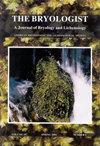基于分子和表型资料的大苔藓属Platismatia (Parmeliaceae, Ascomycota)研究新进展
IF 1.5
4区 生物学
Q4 PLANT SCIENCES
引用次数: 1
摘要
摘要青苔属的地衣是常见的,广泛分布的,是西方分类学家最早研究的地衣之一。然而,迄今为止,关于板蓝藻分子系统发育的研究还很少发表。我们从60个新生成的ITS序列和28个现有的公开序列中推断出了Platismatia的扩展系统发育。新的系统发育证实了轮状假单系的划分,与广泛分布的青花假单系不同,后者被恢复为两个独立的,高度支持的分支,在表型或生物地理上似乎没有差异。北美西部的特有植物P. herrei和P. stenophylla没有被发现是相互的单系植物,可能是最近物种形成的一个例子,类似于在同一地区对Alectoria的假设。生殖模式的祖先状态重建(优势无性生殖vs.有性生殖;无性繁殖体类型)表明像P. tuckermanii这样的有性物种可以从主要的无性祖先进化而来。对物种分布的评估表明,繁殖方式可能与范围大小有关。这些数据为今后地衣的生殖方式、生物地理学和物种形成研究提供了参考。本文章由计算机程序翻译,如有差异,请以英文原文为准。
A new perspective on the macrolichen genus Platismatia (Parmeliaceae, Ascomycota) based on molecular and phenotypic data
Abstract. Lichens in the genus Platismatia are common, widespread and were some of the first to be studied by Western taxonomists. However, few molecular phylogenetic studies of Platismatia have been published to date. We present an expanded phylogeny of Platismatia inferred from 60 newly generated ITS sequences and 28 existing publicly available sequences. The new phylogeny confirms the delimitation of P. wheeleri as monophyletic and distinct from the widespread P. glauca, the latter of which was recovered as two separate, highly supported clades, that do not appear to differ in phenotype or biogeography. The western North American endemics P. herrei and P. stenophylla were not recovered as reciprocally monophyletic and may be an example of recent speciation similar to that also hypothesized for Alectoria in the same region. Ancestral state reconstructions of reproductive modes (dominant asexual vs. sexual reproduction; asexual propagule type) suggest that sexual species like P. tuckermanii can evolve from primarily asexual ancestors. Evaluation of species distributions suggests that reproductive mode may be related to range size. These data suggest that Platismatia could serve as a model for future studies on reproductive mode, biogeography and speciation in lichens.
求助全文
通过发布文献求助,成功后即可免费获取论文全文。
去求助
来源期刊

Bryologist
生物-植物科学
CiteScore
2.40
自引率
11.10%
发文量
40
审稿时长
>12 weeks
期刊介绍:
The Bryologist is an international journal devoted to all aspects of bryology and lichenology, and we welcome reviews, research papers and short communications from all members of American Bryological and Lichenological Society (ABLS). We also publish lists of current literature, book reviews and news items about members and event. All back issues of the journal are maintained electronically. The first issue of The Bryologist was published in 1898, with the formation of the Society.
Author instructions are available from the journal website and the manuscript submission site, each of which is listed at the ABLS.org website.
All submissions to the journal are subject to at least two peer reviews, and both the reviews and the identities of reviewers are treated confidentially. Reviewers are asked to acknowledge possible conflicts of interest and to provide strictly objective assessments of the suitability and scholarly merit of the submissions under review.
 求助内容:
求助内容: 应助结果提醒方式:
应助结果提醒方式:


